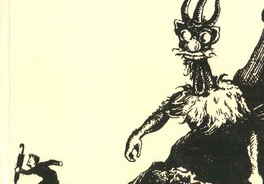Interview with Radhika Menon, founder & managing editor of Tulika Books, India.
Sohini Basak: How did Tulika start out?
Radhika Menon: When we set up Tulika Publishers in 1996, we wanted to create Indian books that were as good as the best books anywhere. No, not “just as good as.” We want to give the children supremely good books and we wanted these books to be right in the Indian context. Our own generation had been fed books from the West, and had been taught to keep away from the more didactic, mass-produced Indian books. Good books, we assumed, came from elsewhere, usually from England!
We needed to reflect a contemporary Indian sensibility. But the contemporary Indian reality was vast, varied, and multilingual. It was clear to us that we would have to publish in as many of the Indian languages as possible.
Today we publish picture books in nine languages simultaneously—English, Hindi, Tamil, Malayalam, Kannada, Telugu, Marathi, Gujarati and Bengali. We also do bilingual books—English paired with each of the other eight languages. Some of the books for older children are in English alone and they too reflect a contemporary “Indianness” in their perspective, and in their very feel and look. READ MORE…




